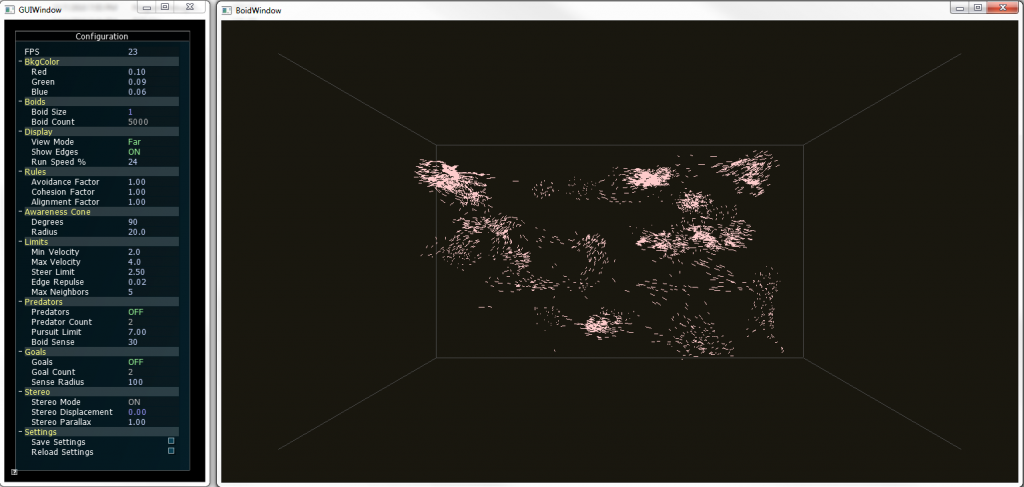From Boids to Documents – Part 1
Posted: July 19, 2012 Filed under: Human and Computer Interaction, Research | Tags: Boids, C++, HCI, Independent Elements, OpenGL, Stereoscopy, Visualization, WinAPI 2 Comments »Here’s some information on the projects as promised.
On Summer 2010 I was approached by my HCI instructor, I have already told him about my interest in the area and that I feel good to go and start working on some projects. My instructor expertise relies on Data and Scientific Visualization and he had something beign cooked at the moment. A fellow student was working in a independent agents program that visualizes several objects in a 3D space with a very dynamic behavior inspired by nature: they tend to group and navigate in this space just like flocks of birds, swarm of insects and banks of fishes do, and they can react to their environment in different ways.
This “Boids” algorithm is very popular and is used in several graphical applications like videogames and movies due to its approximation to the real behavior of these animals without necessarily simulating the way nature does, all with very simple algorithm that is not heavy computationally speaking. Being it for real time or pre rendered presentations the technique really outstanding.
Sort of like that, get the idea?
Well, I jumped into the project and did some optimization to the code and developed some interactions that were needed to further use the application in experimental setups, later we added 3D stereo to it using active shutter glasses, and let me tell you, watching thousands of elements floating out of the screen can be pretty amazing.
The previous picture shows about five thousand elements forming groups on 3D space. You could put other objects that can be either attract (food) or repel (predators) the boids, and you will see them reacting exactly as animals with similar behavior will do. Everything was done using C++, WinAPI and OpenGL. Project was finished and ready to go.
Fast-forward to 2012, a theoretical research was going on based on this technique: What if each element metaphorically represented a document? Well yes it would be a mess, but what if we can actually sort them out by some factor of similarity? No we are talking; we could visualize big structures of documents grouped together in clusters according to its similarity.
That’s what the newest paper is all about, and I’ll tell you how we developed a prototype in the next post.

[…] From Boids to Documents – Part 1 […]
[…] you haven’t read the previous parts check the out: Part1, […]